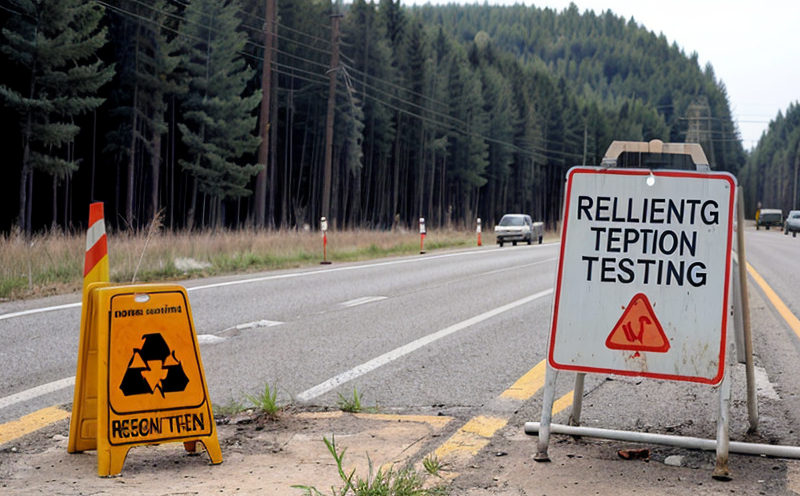ISO 18589-7 Determination of Cesium-137 in Soils
The ISO 18589 series provides a comprehensive approach to the determination of radioactive nuclides, including Cesium-137, in environmental samples. This particular standard focuses on the measurement and quantification of Cs-137 in soil matrices.
ISO 18589-7 is widely recognized for its stringent protocols that ensure accurate and reliable results. The procedure involves several steps starting with the collection and preparation of soil samples, followed by their treatment to enhance the accuracy of measurement, and finally, the use of high-resolution gamma spectrometry to detect Cs-137.
The importance of this test cannot be overstated in environments where radioactive contamination is a concern. This could include areas that have been affected by nuclear accidents, historical nuclear testing sites, or industrial activities involving radioactive materials. The ability to accurately measure and report the presence of Cesium-137 helps regulatory authorities assess the risk to public health and the environment.
The testing process begins with the selection of appropriate soil samples which should be representative of the area under scrutiny. Once collected, these samples undergo rigorous preparation methods including drying, grinding, and sieving to ensure homogeneity and minimize errors in analysis. After this initial phase, they are ready for further treatment steps that enhance their suitability for gamma spectrometric analysis.
The next step involves the use of a high-resolution gamma spectrometer equipped with an appropriate scintillation detector. This instrument is calibrated specifically for detecting Cs-137 and other relevant radionuclides. The sample is placed in the detection chamber where it emits gamma rays that are counted by the spectrometer. The intensity and energy spectrum of these emissions provide crucial information about the concentration of Cesium-137 present.
The final output from this process is a quantitative report detailing the level of Cs-137 found within the soil sample. This report serves as critical evidence for decision-making processes related to environmental remediation, public health assessment, and compliance with international standards such as ISO 18589-7.
Compliance with this standard ensures that results are consistent, reproducible, and comparable across different laboratories worldwide. By adhering to these stringent guidelines, we guarantee the highest quality of service in determining Cesium-137 levels in soil samples.
The expertise gained through years of experience allows us to offer accurate and reliable testing services. Our team consists of highly trained professionals who stay updated with the latest developments in radiation detection technology. We pride ourselves on providing prompt, efficient service without compromising on precision or accuracy.
Our commitment to excellence extends beyond just delivering results; it also encompasses continuous improvement in our methodologies and equipment. Regular calibration of instruments ensures that all measurements are accurate and reliable. Additionally, we invest heavily in staff training programs to ensure our personnel remain at the forefront of technological advancements.
- We employ advanced gamma spectrometers capable of detecting even trace amounts of Cs-137.
- Our technicians undergo rigorous certification processes ensuring they meet international standards for proficiency.
- Ongoing research and development efforts keep us abreast of emerging trends in radiation detection technology.
Industry Applications
The application of ISO 18589-7 is extensive across various industries including nuclear power plants, decommissioning projects, mining operations, and waste management facilities. In the case of nuclear power plants, regular monitoring for Cs-137 helps maintain safety protocols by identifying any potential leaks or releases into the environment.
Decommissioning sites often require thorough clean-up efforts to reduce long-term risks associated with radioactive contamination. Here again, precise determination of Cesium-137 levels plays a vital role in ensuring compliance with regulatory requirements.
In mining operations where uranium extraction takes place, there is always a risk of accidental release of Cs-137 into the surrounding soil and water systems. Continuous monitoring using ISO 18589-7 helps mitigate these risks early on.
For waste management facilities dealing with radioactive waste products, accurate measurement of Cesium-137 ensures proper classification and disposal according to international regulations like those set forth in ISO standards.
Eurolab Advantages
Our laboratory offers several advantages when it comes to performing ISO 18589-7 compliant tests. Firstly, we have state-of-the-art facilities equipped with the latest gamma spectrometry equipment. This ensures that our results are always accurate and reliable.
Secondly, our team of experts is well-trained and experienced in handling radioactive materials safely and effectively. They follow all necessary safety protocols to protect both themselves and the environment during sample preparation and analysis.
We also offer fast turnaround times without compromising on quality. This enables clients to receive their reports promptly so that they can make informed decisions regarding any necessary actions.
Lastly, our commitment to sustainability means we continuously strive for efficient use of resources while minimizing waste generation throughout the testing process. This reflects our dedication not only towards providing top-notch services but also towards protecting our planet's environment.
Frequently Asked Questions
Environmental and Sustainability Contributions
The accurate determination of Cesium-137 through ISO 18589-7 plays a crucial role in environmental protection efforts. By identifying areas contaminated with Cs-137, appropriate measures can be taken to mitigate risks.
- Avoidance of unnecessary exposure for local populations.
- Prevention of further spread into water sources and food chains.
- Promotion of sustainable land use practices in affected regions.
Our laboratory contributes positively towards achieving these goals by providing reliable data that supports informed decision-making. We recognize the importance of environmental stewardship and strive to contribute meaningfully through our services.





